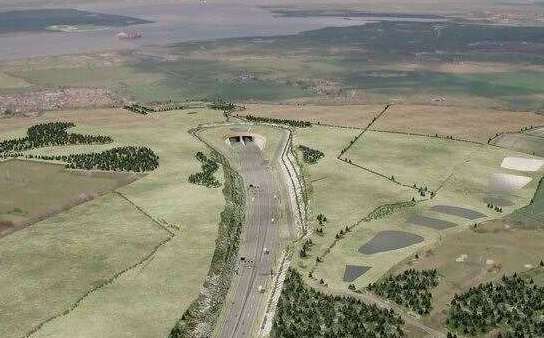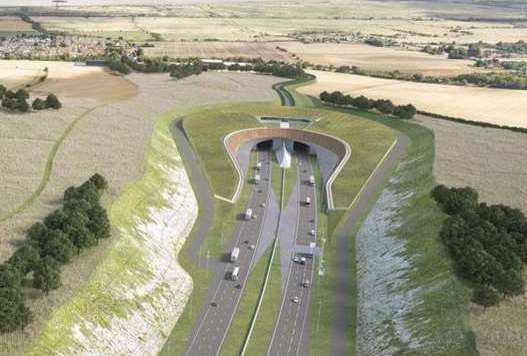Plans for ?9bn Thames crossing become ‘Britain’s longest ever’
Plans to build Britain’s longest road tunnel have become “the longest application” on record – prompting wider concerns about the state of the planning system.
Proposals to build the £9bn Lower Thames Crossing between Kent and Essex have seen reports amass some 359,866 pages spread over 2,838 separate documents submitted.

There are so many pages of plans, arguments, and comments that if every page of paper was laid on the ground it would stretch 66 miles – the equivalent of trip from Gravesend to Cambridge.
If every document was printed, it would weigh 1,620kg, which is slightly more than a Volkswagen Beetle or three polar bears.
That’s according to analysis from campaign group Britain Remade which found it would take around 328 days to read the 94,534,273 words in the planning portal so far.
And that’s assuming people were reading at the average speed of 200 words a minute and they read 24 hours a day.
Last year it was revealed National Highways, which is behind the crossing project, have spent £267m on the planning application alone – more than what Norway spent on completing a 15.2 mile road tunnel back in 2000, the group says.
The Scandanavian country only splashed out £140 million on the world’s longest road tunnel, around £9.2 million per mile, connecting Oslo and Bergen.

Not only was the tunnel much cheaper – costing nearly half of what has been spent on planning applications – but it only took three years to build.
Similarly, just last month the Faroe Islands opened the 10.2km Sandoy Tunnel which connects the country’s two main islands. It cost £99 million and was built in four years.
The Lower Thames Crossing aims to tackle congestion problems at the Dartford Crossing by constructing 14.3 miles of new road and a 2.6 mile tunnel linking Kent with Essex.
It’s also hoped this would improve air quality in Dartford by diverting 13 million vehicles away every year.
But Britain Remade, which says it is putting forward “practical solutions to the problems holding Britain Back”, is still in favour of the project despite these criticisms.
Its founder and campaigner Sam Richards said: “There is an unquestionable need for the Lower Thames Crossing, not only will it cut congestion at the Dartford Crossing, it will also improve air quality.
“With 40% of traffic on the Dartford Crossing freight heading to our most important ports, the lack of capacity is strangling off economic growth.
“But the size of the application is simply insane and totally unjustifiable by any sensible person.

“The facts that we have uncovered are simply mind boggling and make the plan for the Crossing a record breaker for all the wrong reasons.
“The Lower Thames Crossing is symbolic of what is wrong with our planning system. From application’s that are taller than eight double decker buses to having to go through multiple rounds of consultation over many years, currently it’s simply far too difficult and takes far too long to get anything built in Britain.
“Across the country growth boosting, job creating projects face unnecessary planning red tape and delays at the hands of the government meaning we can’t build the new homes needed to bring down rents, build the new offshore wind farms to cut energy bills, and we can’t build the new roads needed to cut traffic jams and get Britain moving.”
Last month National Highways announced a French firm had bagged the contract to build the road tunnel aspect of the project[1].
The plans are being assessed by the Planning Inspectorate, and if approved, work could start in 2026.
National Highways hopes it will open to traffic by 2030.
References
- ^ bagged the contract to build the road tunnel aspect of the project (www.kentonline.co.uk)